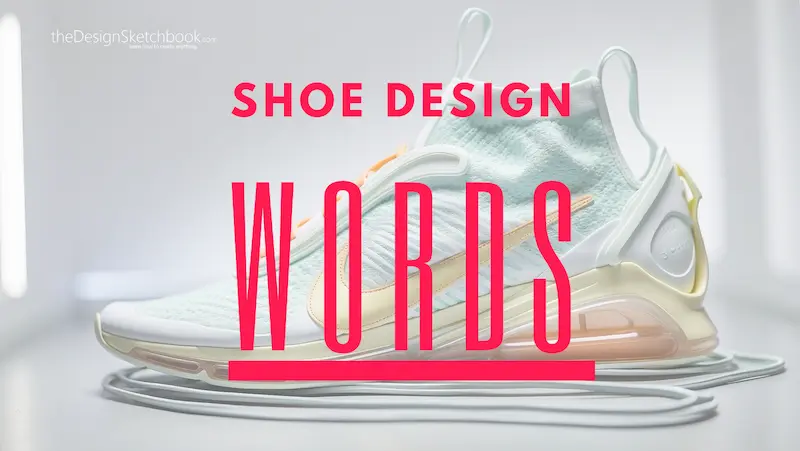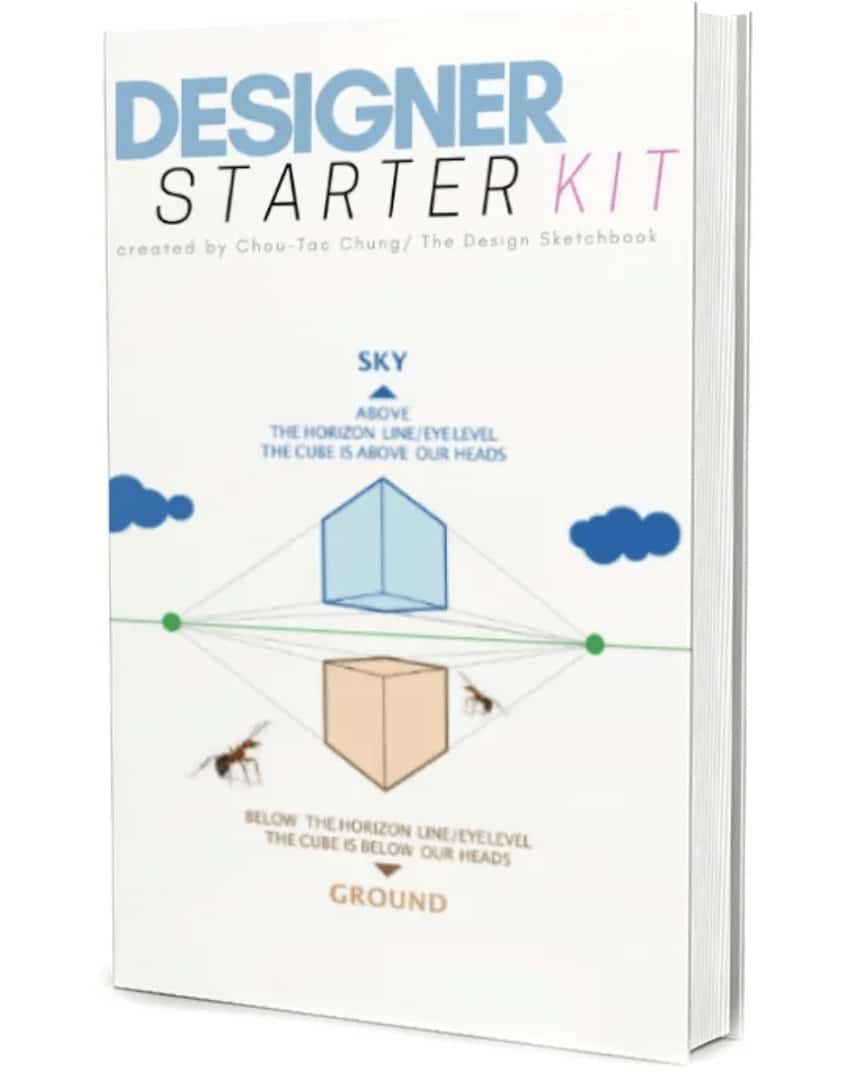
Attention shoe design enthusiasts and designers!
Do you talk the language of shoes?
Are you ready to take your shoe-designing skills to the next level?
I have compiled a Shoe Vocabulary list of essential words
and definitions that every shoe designer should know.
From materials to construction techniques,
this list of 101 words will provide you with the knowledge
and vocabulary to create your dream shoe designs.
101 Shoe Vocabulary List for Designers
1. Last – A three-dimensional model used to shape and form the shoe.
2. Upper – The part of the shoe that covers the foot.
3. Outsole – The bottom part of the shoe that makes contact with the ground.
4. Midsole – The layer between the outsole and the upper that provides cushioning and support.
5. Insole – The layer inside the shoe that sits directly under the foot.
6. Heel – The back part of the shoe that provides elevation and support.
7. Toe box – The front part of the shoe that houses the toes.
8. Vamp – The upper part of the shoe that covers the instep.
9. Quarter – The part of the upper that wraps around the heel.
10. Tongue – The flap of material that sits under the laces and covers the top of the foot.
11. Eyelets – The holes where the laces are threaded through.
12. Laces – The cords used to tighten and secure the shoe.
13. Collar – The part of the shoe that wraps around the ankle.
14. Shank – A supportive piece of material that runs through the midsole.
15. Arch support – A feature in the midsole that provides support to the arch of the foot.
16. Cushioning – A feature in the midsole that provides shock absorption.
17. Flexibility – The ability of the shoe to bend and move with the foot.
18. Traction – The ability of the outsole to grip the ground.
19. Breathability – The ability of the shoe to allow air to circulate around the foot.
20. Water resistance – The ability of the shoe to repel water.
21. Durability – The ability of the shoe to withstand wear and tear.
22. Comfort – The overall feeling of ease and satisfaction when wearing the shoe.
23. Fit – How well the shoe conforms to the shape of the foot.
24. Style – The aesthetic design of the shoe.
25. Colorway – The specific color scheme of the shoe.
26. Branding – The logos and trademarks associated with the shoe.
27. Materials – The various materials used to construct the shoe.
28. Leather – A durable and flexible material made from animal hide.
29. Suede – A type of leather with a soft, fuzzy texture.
30. Canvas – A lightweight and breathable fabric.
31. Mesh – A breathable fabric with small holes.
32. Synthetic materials – Man-made materials
(often called PU, polyurethane leather) such as rubber, plastic, and foam.
33. Patent leather – A type of leather with a shiny, glossy surface.
34. Nubuck – A type of leather with a soft, velvety texture.
35. Gore-Tex – A breathable and waterproof membrane used in some shoes.
36. EVA – A lightweight and durable foam used in the midsole.
37. Phylon – A lightweight and responsive foam used in the midsole.
38. PU – A durable and supportive foam used in the midsole.
39. TPU – A durable and flexible plastic used in the midsole and outsole.
40. Rubber – A durable and grippy material used in the outsole.
41. Carbon fiber – A strong and lightweight material used in some shoes for support and stability.
42. Heel counter – A supportive piece of material that wraps around the heel.
43. Toe cap – A protective piece of material that covers the toe box.
44. Toe bumper – A reinforced piece of material that covers the front of the outsole.
45. Piping – A decorative strip of material that outlines the edges of the shoe.
46. Perforations – Small holes in the upper for breathability and style.
47. Embossing – A decorative technique that creates a raised design on the surface of the shoe.
48. Stitching – The process of sewing the various pieces of the shoe together.
49. Welt – A strip of material that connects the upper to the outsole.
50. Goodyear welt – A type of welt construction that is known for its durability and water resistance.
51. Cement construction – A type of construction where the upper is glued to the outsole.
52. Blake construction – A type of construction where the upper is stitched directly to the outsole.
53. Moccasin construction – A type of construction where the upper is wrapped around the foot and stitched to the outsole.
54. Slip-on – A type of shoe that does not have laces or a fastening mechanism.
55. Lace-up – A type of shoe that is secured with laces.
56. Velcro – A type of fastening mechanism that uses hook-and-loop closures.
57. Buckle – A type of fastening mechanism that uses a metal clasp.
58. Strap – A piece of material that wraps around the foot and fastens with a buckle or Velcro.
59. Platform – A type of shoe with a thick, elevated sole.
60. Wedge – A type of shoe with a sole that is thicker at the heel than at the toe.
61. Stiletto – A type of high-heeled shoe with a thin, pointed heel.
62. Block heel – A type of heel that is wide and chunky.
63. Kitten heel – A type of low heel that is less than two inches tall.
64. Flats – A type of shoe with a low or no heel.
65. Loafers – A type of slip-on shoe with a low heel.
66. Oxfords – A type of lace-up shoe with a low heel.
67. Brogues – A type of shoe with decorative perforations and a low heel.
68. Derby – A type of lace-up shoe with an open lacing system.
69. Monk strap – A type of shoe with a buckle or strap instead of laces.
70. Boat shoe – A type of slip-on shoe with a rubber sole.
71. Espadrille – A type of shoe with a woven or rope sole.
72. Sandals – A type of shoe with open toes and a strap or straps across the foot.
73. Flip-flops – A type of sandal with a thong strap between the toes.
74. Slides – A type of sandal with a single strap across the foot.
75. Clogs – A type of shoe with a wooden sole and a closed toe.
76. Mules – A type of shoe with a closed toe and an open back.
77. Slingbacks – A type of shoe with a strap that wraps around the back of the heel.
78. Ankle boots – A type of boot that covers the ankle.
79. Knee-high boots – A type of boot that covers the knee.
80. Over-the-knee boots – A type of boot that covers the thigh.
81. Cowboy boots – A type of boot with a pointed toe and a high shaft.
82. Combat boots – A type of boot with a sturdy sole and a lace-up front.
83. Hiking boots – A type of boot designed for hiking and outdoor activities.
84. Snow boots – A type of boot designed for cold and snowy weather.
85. Rain boots – A type of boot designed for wet weather.
86. Work boots – A type of boot designed for heavy-duty work.
87. Athletic shoes – A type of shoe designed for sports and physical activity.
88. Running shoes – A type of athletic shoe designed for running.
89. Cross-training shoes – A type of athletic shoe designed for a variety of activities.
90. Basketball shoes – A type of athletic shoe designed for basketball.
91. Tennis shoes – A type of athletic shoe designed for tennis.
92. Soccer cleats – A type of athletic shoe designed for soccer.
93. Golf shoes – A type of athletic shoe designed for golf.
94. Skate shoes – A type of shoe designed for skateboarding.
95. Cycling shoes – A type of shoe designed for cycling.
96. Dance shoes – A type of shoe designed for dancing.
97. Ballet flats – A type of flat shoe designed for ballet.
98. Tap shoes – A type of shoe with metal plates on the sole for tap dancing.
99. Jazz shoes – A type of shoe designed for jazz dancing.
100. Pointe shoes – A type of shoe designed for ballet dancers to dance on the tips of their toes.
101. Character shoes – A type of shoe designed for musical theater and dance performances.
Tadaa!
This Footwear terminology list is not comprehensive.
If you have any words you’d like to add, please let me know in the comments and I’ll be happy to include them!” 🎨
Cheers,
Chou-Tac


thanks
ojudej